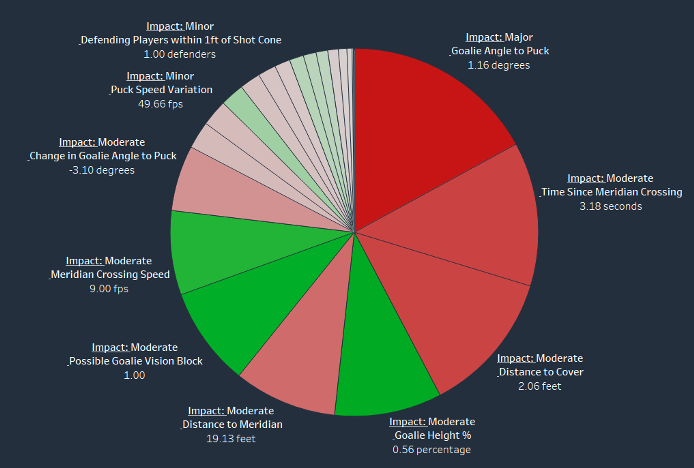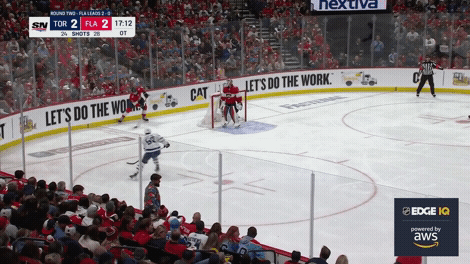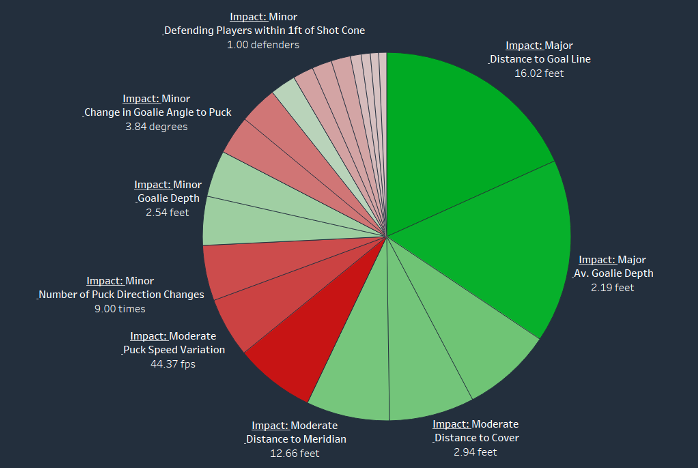
One of my favourite quotes from this NHL season came from then-NY Rangers coach Gerard Gallant, right at the very end of March. They were about to play the Carolina Hurricanes — who looked likely to be their first-round playoff opponent — and he was asked at the end of an interview if he was going to try to change anything they do to disguise their real game plan.
Gallant took no pause before saying “I mean we’re pretty close, and you watch games on TV every night, so, there’s no secrets in the NHL anymore.”
No secrets.
I love the quote because it’s simple and true. With all the video coaching, scouting and the 24-hour sports news cycle, there are very few ways to surprise an opponent these days. I can’t recall a single just-eliminated NHL team going “Well they played all new systems in the playoffs that we hadn’t seen before, and we just couldn’t recover.”
Hockey just isn’t like football where you can draw up a trick play or coverage scheme, practice over the week, and roll it out on Sunday. The next games arrive rapidly and without much practice, the run of play is unpredictable, and so your best bet is to build systems that work for the talent on your roster, execute them well, and challenge your opponents to stop you.
That to me is the Florida Panthers this year in the playoffs, who have revealed themselves to a degree that feels borderline indecent. They came into the playoffs advertised as a fast forechecking team capable of creating some turnovers, and have won 11 of their last 12 games by … being a fast forechecking team capitalizing on chances off turnovers. They’ve been nothing if not true to exactly who they told us they were.
Their only secret is that it’s really hard to defend against a team whose strength is capitalizing on quick lapses. You need to play the full 60 minutes, and in the case of playoffs, often far more.
Along the way they’ve won a ton of close games – including six in overtime – in large part because of great goaltending, but the OT winners they’ve scored haven’t relied on the prototypical playoff screens, tips or rebound luck. In fact, four of the six winners have seen the puck go below the opposing team’s goal line within seconds of it ending up in the back of their net. It’s been that same forechecking and quick strike mentality.
Florida has created one of the lowest rates of chances off both rushes and cycles this playoff season, but they’ve been among the best few at creating chances off the forecheck.
Below I’ll use the NHL’s EDGE IQ data (powered by AWS) to show just what chaos this Panthers forecheck pressure can do not just to teams (who aren’t yet in their structure), but also goaltenders (who generally aren’t as set for shots that come shortly after their team had possession).
FOUR OT WINNERS
Two of the Panthers’ six OT winners have been outliers. One was a power play tic-tac-toe beauty, and the other was a rush where the Leafs had a forward back playing defence, which went about as you’d expect.
Let’s look at the other four in chronological order to find some pattern, and dig into what’s happened.
Matthew Tkachuk on the forecheck: Round 1, Game 5 vs. Boston
Theme number one: the puck starts back in the Panthers’ end before going the length of the ice behind the opposing team’s goal line.
Sometimes teams use these long retrieval scenarios as an opportunity to change, or because it’s OT, they just sag into their defensive structure and challenge the other team to find their way back through.
Florida, though, almost always sends at least one forechecker (tired or not), often leaving that guy on the ice while the other two change to get fresh legs. Here, I won’t try to armchair psychologist Linus Ullmark’s mistake, but credit to Sam Reinhart in that he skates so hard alongside Matt Grzelcyk (who fails to get to a corner to be an option for his goalie) that the Boston defender can’t be an easy option for Ullmark. Whatever the goalie was thinking, Reinhart’s hustle made it harder on him.
That’s what up-ice pressure is.
As a result, Ullmark doesn’t have an “easy” option, so he makes a blunder. Matthew Tkachuk is following the play up with speed and has the hands to tuck this one away.
The AWS data shows us what a broken play looks like in numbers form.
The biggest influences on whether a shot has a high Projected Goal Rate (PGR) are listed around this pie chart like a clock, with “green” factors increasing a shot attempt’s likelihood of becoming a goal, and “red” factors decreasing an attempt’s PGR. (Remember, even shots that go in can have factors about them that reduced their chances of becoming a goal.) In this case, it’s obviously about what the blunder does to Ullmark who is dead-to-rights from the moment Tkachuk gets his hands on this puck. I’d focus on that pie chart to see which of the AWS factors have the greatest impact here:
I can’t get over the colours of that chart looking like a green at Augusta National, it may be the most “yeah that’s gonna be a goal” play from a data perspective I’ve ever seen. Ullmark’s distance to cover and angle to the puck are obviously the biggest inputs here. But the puck’s also close to the net, comes across the middle in front of the net, is a handful of feet from the net … yeah this one is clearly a goalie whoopsie with a huge PGR (nearly 70 per cent!).
But what’s interesting is to take pieces of the flailing Ullmark and see how it shows up for other goalies who aren’t so obviously overwhelmed, yet still have trouble.
Carter Verhaeghe off a forecheck: Round 1, Game 7 vs. Boston
Like the play before, this puck starts all the way back at the top of the Panthers’ D-zone circles before it’s worked up to Nick Cousins, who – shocker – dumps it in.
Watch Tkachuk work off the backside of this play though, and see how he continues to skate on the forecheck to be the first person in on the puck. From there the Panthers demonstrate their natural instincts to turn broken plays into shots and chances. This is a very different goal in that the goaltender is set, but the defence is scrambling and ends up screening their own goalie:
By the numbers, this shot isn’t typically a goal, as the keeper’s angle was on point, the puck didn’t change sides before the shot, Jeremy Swayman didn’t have to move to stop it, and it wasn’t taken from the most dangerous spot on the rink. But goalie height is way off, as he’s crouching to see through a screen, and that vision block is sometimes all it takes to turn a low PGR attempt into a goal.
The Panthers strike before the defence can get settled, so while these two goals end differently, they both come as a result of a scrambling team that was under forecheck pressure.
Sam Reinhart off a puck sent in deep: Round 2, Game 3 vs. Toronto
This chance again comes off a puck below the offensive goal line, where the opposition (the Leafs) are passively trying to keep things to the outside, while the Cats are skating and move their feet after pucks. It’s that pursuit that makes the difference.
Again it’s the guy away from the puck at the bottom of the screen – Reinhart – who’s actively skating and finding the separation necessary to create a chance, even after he initially unloads the puck:
By the time he releases this puck, you can see how many factors jammed the PGR up through the roof: The goalie barely knows where the puck is coming from; he’s moving; it’s right in front of the net; and it’s just changed sides.
The NHL/AWS data measures this attempt ending in a goal almost 40 per cent of the time (I imagine most goaltenders would like to see Joseph Woll play this differently, which would account for the 60 per cent likelihood of an attempt like this typically being stopped). But again, the theme is how the Panthers skate in after pucks rather than sagging and waiting.
And again we see how a team and goalie aren’t ready for an opponent coming after them, which leaves them scrambling and with little defensive plan to answer these quick attempts.
Last one now…
Matthew Tkachuk off a forecheck: Round 3, Game 1 vs. Carolina
I’ve clipped these GIFs in a way that shows just how far back in the Florida zone they originate from, which really speaks to the Panthers’ open plan to punt it in and out, then try to force mistakes.
The Tkachuk goal in Game 1 of Round 3 looks like some tired Canes players were just rushing plays by a millisecond, I would imagine because it was seven periods in and the Panthers were still moving their feet on the forecheck. And you talk about quick strike: Just milliseconds after the Canes lost clean possession of the puck both Tkachuk and Sam Bennett have offence on the mind, and are trying to create a look.
The data on this one is super interesting, because I think it shows a tired keeper just kinda standing in his crease and trying to catch a puck rather than moving out aggressively into a shot.
Look at the things that increased the likelihood of this “medium” danger chance going in (aside from distance to the goal line). The initial turnover is to blame, but the chance isn’t that dangerous – it’s the goalie factors that stand out to me.
The average goalie depth is a keeper just standing in one spot, as is the goalie height, where Frederik Andersen stays deep then just kinda drops early and tries to catch the puck like Mr. Miyagi catching a fly with chopsticks. He starts on the goal line and doesn’t come out very far beyond that.
In a nutshell, I see a goalie conservatively hugging his post, then a quick turnover results in an immediate chance and he’s just not able to have the usual pop in getting out to make the save. Again, I’m playing armchair psychologist, but that sounds like a tired player to me.
The Panthers sure seem to tire out a lot of teams, don’t they?
CONCLUSION
I see these goals in two groupings – the Verhaeghe goal against Swayman in Game 7, and the Tkachuk goal in Game 1 versus Carolina are similar. They win the puck on the forecheck, create a chance, and get a shot before the goalie can get set how they want. Then there’s the Tkachuk winner against Boston, and the Reinhart winner versus Toronto, on which Florida comes with pace below the goal line, forcing their opponents to scramble and then quickly unravel.
The data shows that puck-pursuit-and-quick-strike mentality hinders both the defence and the goaltenders, and really emphasizes how Florida has done what they’ve done. With a hot goalie, a team that can take turnovers and quickly turn them into dangerous attempts can beat just about anyone. It’s not hard to see the formula with which they could win the Stanley Cup.
And hey, the Florida Panthers aren’t hiding it. They’ve told their opponents exactly who they are from the start, yet nobody’s been able to stop them.
There are no secrets in the NHL anymore, because sometimes the well-executed truth can be enough.















